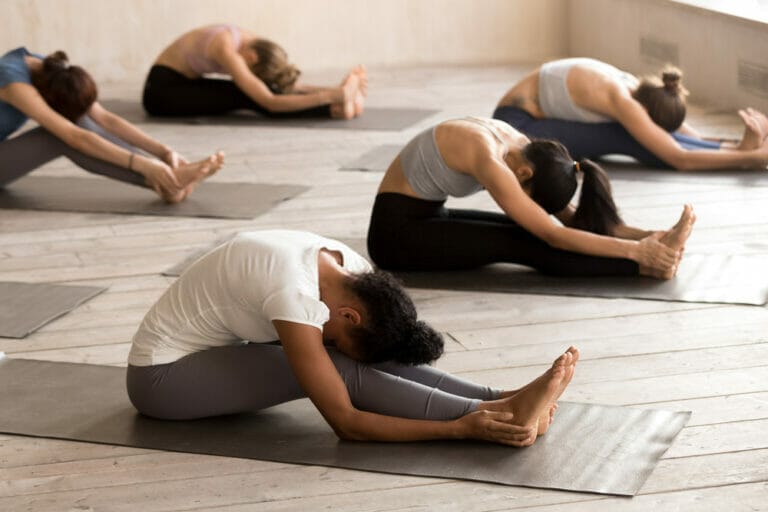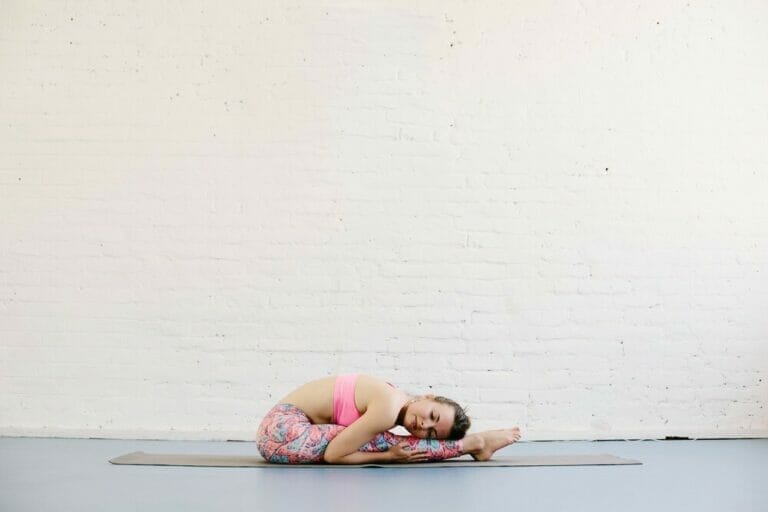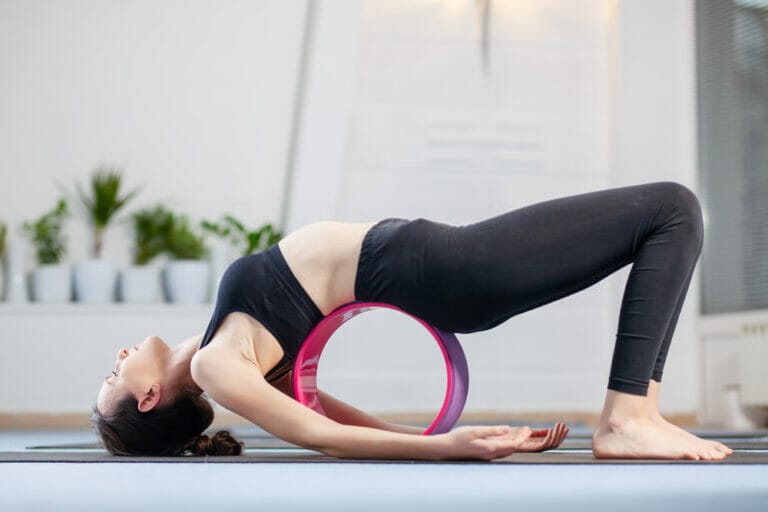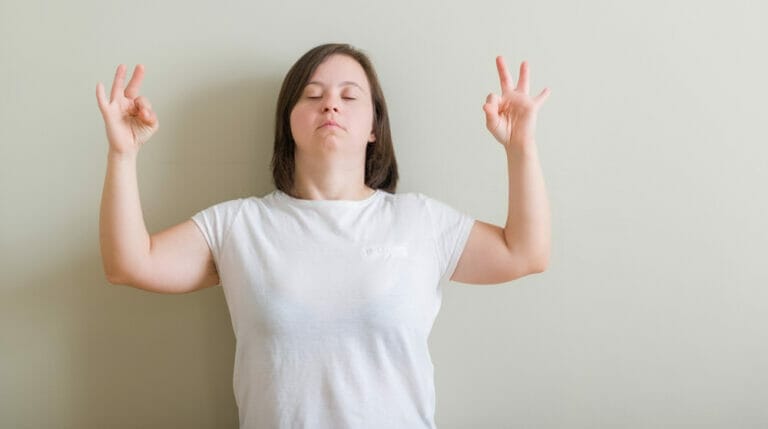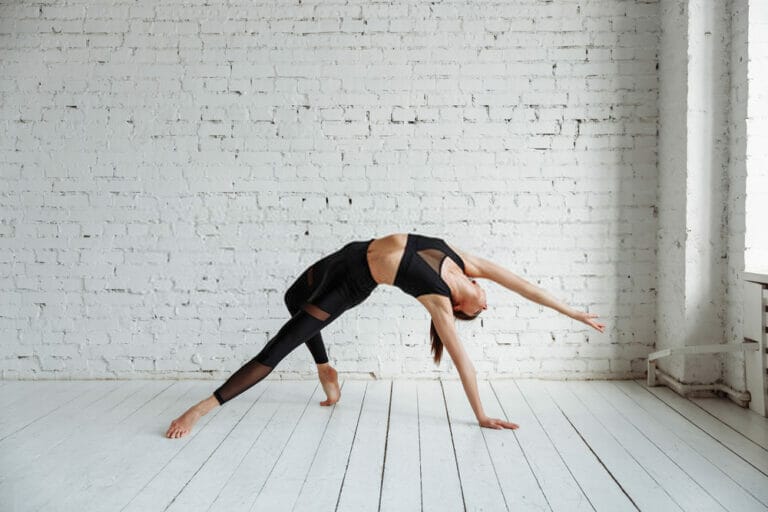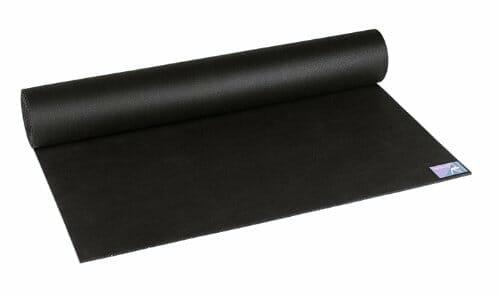Exercise Mat Vs Yoga Mat – The Difference Between The Both
Think again if you believe that all workout mats are the same. These mats, which you can purchase online or at a sports store, have distinct functions.
And, while you may believe that you can use any mat, it is important to utilize the appropriate mat to be more efficient and pleasant throughout your workout.
Different workouts need varying support, and having the proper mat will keep you from injuring yourself.
So, what is the distinction between a yoga mat and a regular workout mat? The difference is in the variety of thicknesses, materials, and densities.
Let us begin with a regular exercise mat.
Exercise mats are for high-impact and ground activities. These mats are ideal for giving a cushion under your feet when performing jump exercises such as jumping jacks, burpees, or jump rope. They also give adequate comfort for floor workouts such as crunches, push-ups, and pilates routines.
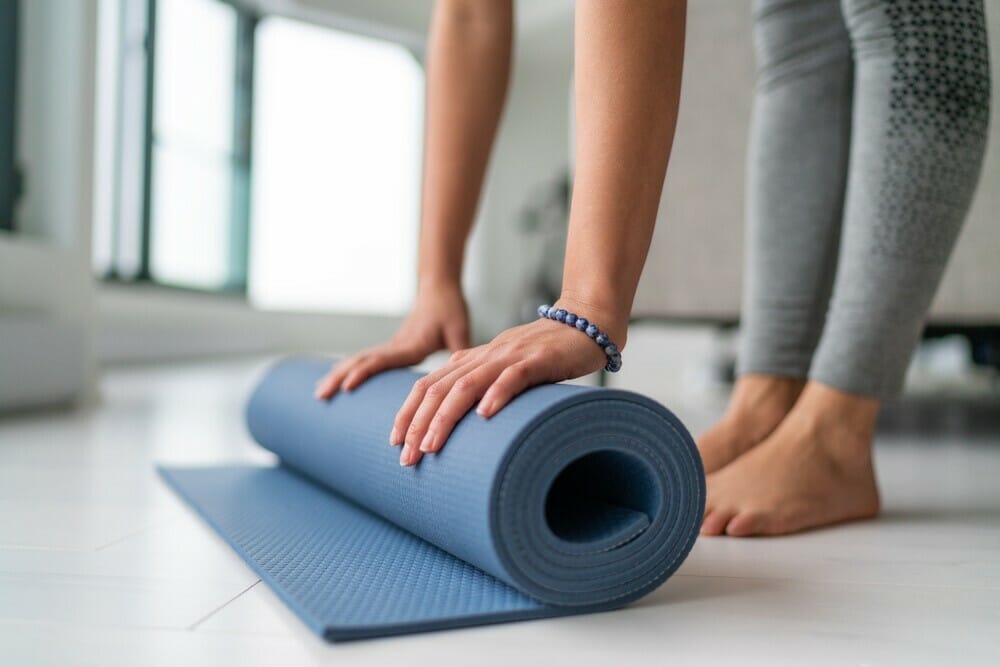
The standard size is around one inch thick, although some are two inches thick. The thickness of a workout mat allows you to do more high-impact motions without experiencing joint discomfort. They alleviate part of the impact of leaping.
Thicker mats are better for those who sweat a lot since they are more sweat-absorbent. When looking for an exercise mat for sweating exercises, go for a vinyl surface because it is easier to clean.
Exercise mats are useful for more than just mat workouts; you may also use them-
- To protect your floor from scratches, place it beneath workout equipment.
- Protecting your floor from the impact of dropped weights.
Exercise mats are generally wider and longer than yoga mats for high-intensity workouts that may entail bouncing about.
You do not move away from your mat; instead, you stay in one spot and perform various yoga postures. An exercise mat is for more active training.
Pros of exercise mats
- They are cost-effective.
- Exercise mats are long-lasting. They are not easily damaged or worn out, meaning that you can use them for quite some time
- They are usually made of non-slip materials.
Cons of exercise mats
- Some people find them too thin and flimsy, making it difficult to do exercises that require balance.
For example, if you were using an exercise mat for yoga, you might have difficulty balancing your hands when doing handstands.
- Exercise mats are not good for protecting your floor. They do not provide much cushioning or protection for your feet, causing you to perform exercises on damp, cold floors.
- They are not ideal for long sessions. The more intense the workout, the shorter you can use it without getting sore or tired.
Yoga mats
- Classic yoga mat: These durable, yet lightweight exercise yoga mats are extra thick (1/4 Inch) for the additional cushioning your joints need during any yoga or fitness routine
- Sticky non slip texture: Yoga mat is featured in classic colors with a textured non slip surface for excellent traction and superior grip in all types of yoga, even heated practices and hot yoga
- Non toxic and 6p free PVC yoga mat is a healthier choice for you and the planet and free of DEHP, DBP, BBP, DINP, DIDP and DNOP (For best results unroll and air out your mat for 2 to 3 days before use)
- Includes yoga mat carrier sling: Included with your yoga mat is a carrying sling/strap so you can strap up your mat and go
- Dimensions: 72 inches L x 24 inches W x 1/4 Inch Thick (3.5 pounds)
You may use yoga mats for low-impact activities and postures. When practicing yoga, your body should be as near the floor and the Earth as possible to experience the energy connection.
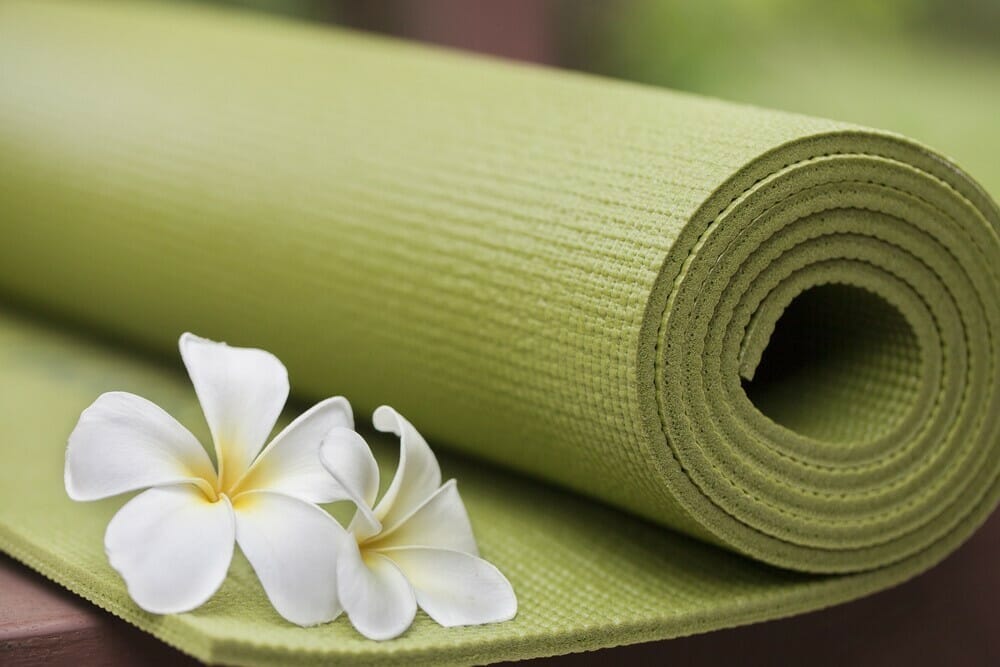
That is why yoga mats are thinner than workout mats. They give just enough cushion for your motions, preventing your hands and feet from slipping and allowing you to feel linked to the energy of the Earth.
A normal mat is 1/8 inch thick, but you may pick a 14-inch thick mat for additional comfort. Some yoga mats are available with a smaller 1/16 inch thickness, making them more compact and simple to transport.
Yoga mats are generally constructed of PVC or vinyl, but if you prefer something more environmentally friendly, you may select cotton, bamboo, jute, or recycled rubber. The material of the yoga mat you select will also affect the grip and texture.
PVC mats are more slippery when first purchased, but they are stickier than rubber mats, allowing them to adhere to the floor better. Rubber yoga mats, on the other hand, offer a better hold.
When selecting a yoga mat, two key factors to consider are:
- Texture — The mat’s texture will protect you from slipping off it, especially if you start sweating.
- Stickiness – This refers to the mat’s ability to adhere to the ground. It is crucial because you don’t want the mat to slip out from beneath you when doing poses.
Pros of yoga mats
- They are specifically designed for yoga poses, making them more comfortable to use.
- They are constructed of non-slip materials.
- Easy to transport
- Usually affordable
Cons of yoga mats
- Yoga mats do not protect your feet from sweat or cold floors. They are not well suited for performing floor exercises such as push-ups or crunches due to the lack of cushioning or shock absorption.
- They are not ideal for high-intensity workouts or exercises that require you to be active or move around.
- If you buy an eco-friendly mat, it will not last as long as the traditional ones.
- They are thin and tend to get dirty.
Main differences
- Thickness – A normal yoga mat is around 18 inches thick, with the thickest being 14 inches. While a normal workout mat is one inch thick and can be as thick as two inches.
- Non-slip – The yoga mat is the only one that is non-slip. The other two are slightly slippery, but you can clean them if they get dirty, which is not the case with the yoga mat.
- Size – A yoga mat is typically 24 inches broad and 68 inches long. Exercise mats come in various sizes ranging from 68 to 98 inches long and 24 to 48 inches broad.
- Material – Most yoga mats are PVC; however, environmentally friendly mats are recycled rubber, organic cotton, jute, or bamboo. Closed-cell PVC with a vinyl cover is used in the manufacture of some workout mats. Some of them are rubber.
- Purpose – A yoga mat’s principal function is to keep your hands and feet from slipping. They also function as a cushion for floor postures.
Floor workouts and stretches are made more comfortable with the use of exercise mats. They can help cushion some of the impact associated with leaping workouts.
- Durability – Yoga mats are less durable than exercise mats. Yoga mats are not as long-lasting as workout mats, and you have to replace them frequently.
- Cleaning – Yoga mats can be washed using a damp cloth. You cannot clean them using a machine. You can clean exercise mats in a washing machine with no issues.
The majority of yoga and exercise mats manufactured nowadays are PVC and rubber. Many are available in either natural or black colours, while some manufacturers offer coloured varieties: brown, green, blue, or pink.
- Portability – Exercise mats are not suitable for travel. When travelling, portable yoga mats are compact and easy to transport. You can fold them easily into a small space for easy storage.
Which one should you choose?
Maintenance and durability are the two most important elements that every user considers. Exercise mats are unquestionably the safest choice when you take these two factors into account.
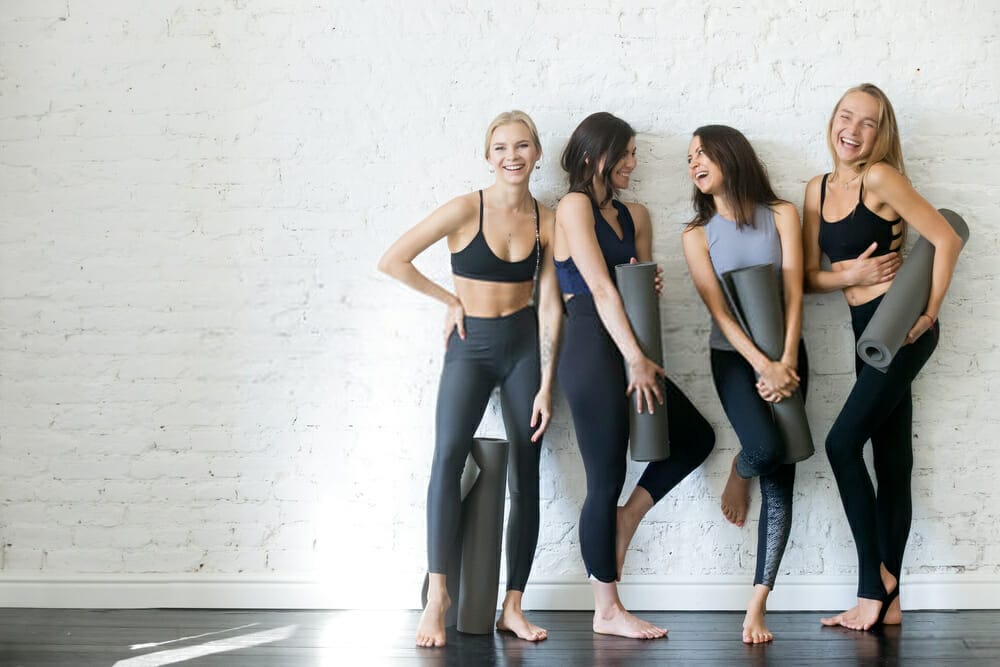
When compared to their rivals, they are not only simple to maintain but also quite durable. Because you can't transport them from one location to another, they're less likely to get soiled. It also means less cleaning and work.
Cleaning is also extremely simple and straightforward. Any dirt or sweat on the mats may be cleaned or wiped away with a wet cloth.
You can perform bodyweight exercises and floor workouts on exercise mats. On the other side, yoga mats are more susceptible to dampness. They have a greater probability of getting soiled quickly because they are travel-friendly.
As a result, they need to be washed and maintained frequently to endure a long period. Low-impact workouts are great for yoga mats.
Conclusion
Exercise mats are the best choice if you want to avoid having to buy one every six months. They are simple to clean and simple to maintain, making them practically indestructible.
Their durability is unquestionable, with most of them being able to withstand the rigours of high-impact exercises.
Yoga mats are suitable for practising yoga, floor workouts, and stretches on your home gym’s carpet or hardwood floor.
They offer less traction than exercise mats but provide adequate cushioning for floor postures or yoga workouts.
If you’re a beginner, a yoga mat tutorial will provide a clearer idea of using these tools. Also, when considering the price of each type of yoga mat, it is important to know that once they are purchased, the maintenance and cleaning of both types are similar.
I hope you now have a clear understanding of the differences between yoga mats and exercise mats. With this information, you should be able to make the right choice to help you achieve your fitness goals!



